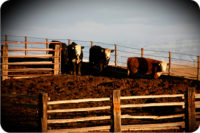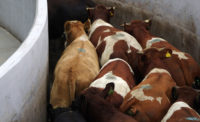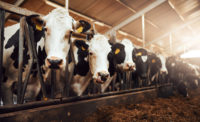Animal welfare auditing has become as commonplace in slaughter establishments as HACCP monitoring practices. In larger facilities, humane handling audits are conducted multiple times per day on every production day. The overall improvement in animal welfare and the focus on innovation in livestock handling practices have been well-documented. Those who have paid attention over the past 15 years can easily describe the cultural shift that has occurred. You’d be hard-pressed to find someone who wouldn’t call this a good thing.
Other sectors of livestock production have implemented farm-level auditing programs as the need to demonstrate animals are appropriately cared for has become increasingly necessary. At the same time, egregious and willful acts of abuse have still been uncovered, sometimes in the public eye.
Livestock producers may turn to farm-level auditing programs to help prevent bad things from happening on their farms. There is an important question that needs to be asked: Is there a better tool to prevent the occurrence of abusive handling?
We can begin to search for an answer by thinking about what an audit is. An audit is a description of a specific focal point at a specific point in time. Many people describe an audit as a “snapshot.” It is common for on-farm audits to be prescribed on an annual basis. Audits are typically structured to take a half-day at the most to complete. This provides the auditor with time to travel to and from the farm.
Keeping the snapshot concept in mind, let’s do some math. There are 8,760 hours in a year. Because livestock production is an all-day-every-day affair, we will use this number as the denominator in our equation. Let’s say an audit takes four hours. An auditor is present to observe 0.046 percent of the time that animals may potentially be handled by people during a year. That is a very small sample.
Let’s consider what happens to employee behavior during the very short time that an auditor is on site. In general, it is human nature to display our best behavior when we know we are being watched. Because an auditor’s job is to watch, it is no surprise that abusive acts are not typically caught during audits.
Are on-farm audits valuable? Absolutely. But we must understand the capability of a management tool that provides a “snapshot.”
On-farm audits are excellent tools to identify chronic issues that have a relatively stable rate of occurrence from day-to-day. Conditions such as lameness and body condition generally fit this description. The occurrence of abusive behavior is generally sporadic and more difficult to catch unless it happens all the time.
An annual audit will not prevent abusive behavior, and it should not be expected to.
How do we prevent abusive behavior?
The only tool that will consistently work at the farm level must come from the farm management. A culture that expects respectful animal handling and does not tolerate abuse must be created and maintained. Simply put: the opportunity to care for livestock needs to be regarded as a privilege. It is not for everyone.
This is a concept that starts at the top and percolates through an organization.
Great managers will use audits to benchmark and manage chronic issues. Great managers know that the most powerful tool that we have to prevent abuse in animal agriculture is culture. NP






Report Abusive Comment